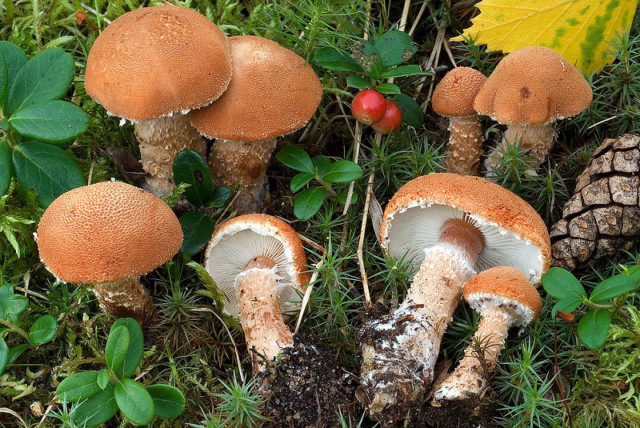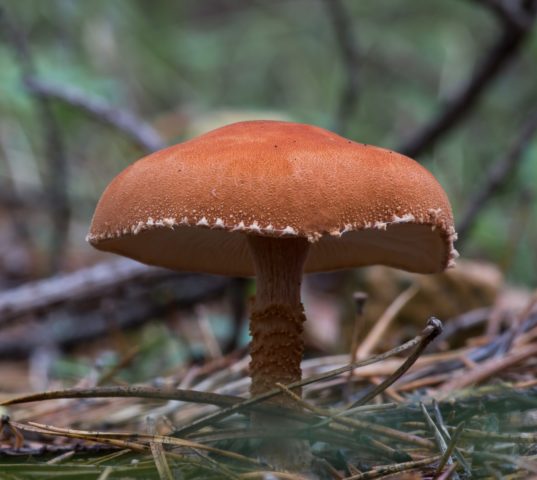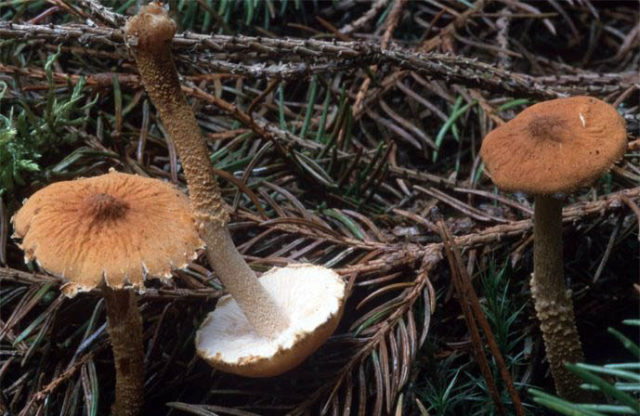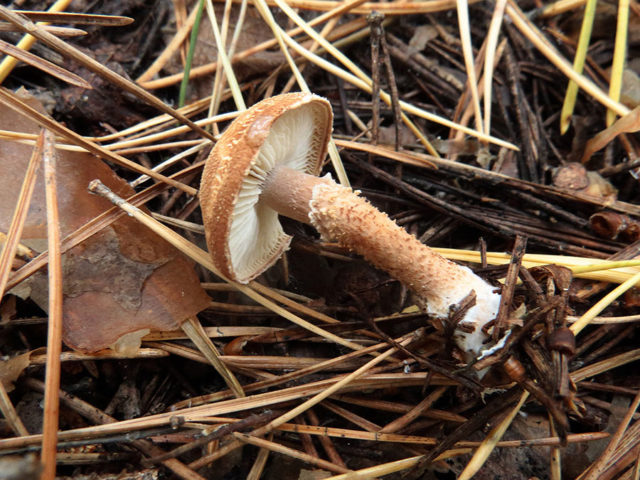Content
Granular cystoderm belongs to the class Agaricomycetes, the Champignon family, the genus Cystoderm. This species was first described in 1783 by the German biologist A. Beach.
What does granular cystoderm look like?
This is a small fragile lamellar mushroom with a rounded convex cap, which straightens during growth, maintaining a slight elevation in the middle.
Description of the hat
The cap of the granular cystoderm has the shape of an egg, it is convex, tucked inward, its surface is warty, covered with flakes, along the edges there is a fringe. In older specimens, it is flat-convex or flat with a bulge in the center, covered with dry fine-grained skin, sometimes with scales, wrinkles or cracks.
The color is ocher or reddish brown, sometimes with an orange tint. The caps are small, ranging in diameter from 1 to 5 cm. The plates are frequent, wide, loose, yellowish or creamy white.
The pulp is light (yellowish or whitish), soft, thin, odorless.
Leg description
The leg is 2-8 cm high and 0.5-0.9 cm in diameter. It has a cylindrical shape and can expand towards the base. The leg is hollow, with a dull dry surface, smooth at the top, with scales at the bottom. The color is like the hat, only lighter, or lilac. There is a reddish ring with a granular structure on the stem, which disappears over time.
Is the mushroom edible or not
It is considered a conditionally edible mushroom.
Where and how it grows
Granular cystoderm is common in North America, Eurasia, North Africa. Grows in colonies or singly. Found on mosses and soil, mainly in deciduous forests. Sometimes found in conifers and mixed. Prefers to settle on paths, the outskirts of woodlands, pastures overgrown with bushes. The fruiting season is from August to October.
Doubles and their differences
The closest relative is the cinnabar-red cystoderm. Differs in larger size and beautiful color. The cap can reach 8 cm in diameter. It is bright, cinnabar-red, darker towards the center, with a grainy powdery skin, white flakes around the edges. At first, it is convex, with an inwardly curved edge, with growth it becomes prostrate-convex, tuberous, with a fringe along the edge. The plates are pure white, poorly adherent, thin, frequent, creamy in mature specimens.
The leg is 3-5 cm long, up to 1 cm in diameter. It is hollow, thickened at the base, fibrous. The ring is red or light, granular, narrow, and most often disappears with growth. Above the ring, the leg is light, naked, under it is a reddish, granular-scaly, lighter than the cap.
The flesh is whitish, thin, reddish under the skin. Has a mushroom smell.
Grows mainly in coniferous forests with pines, occurs in groups or singly. The fruiting season is July-October.
Cinnabar-red cystoderm is a rare edible mushroom. Fresh consumption is recommended after boiling for 15 minutes.
Conclusion
Granular cystoderm is a little-known conditionally edible mushroom.It is most common in North America, but it is also quite rare there.













